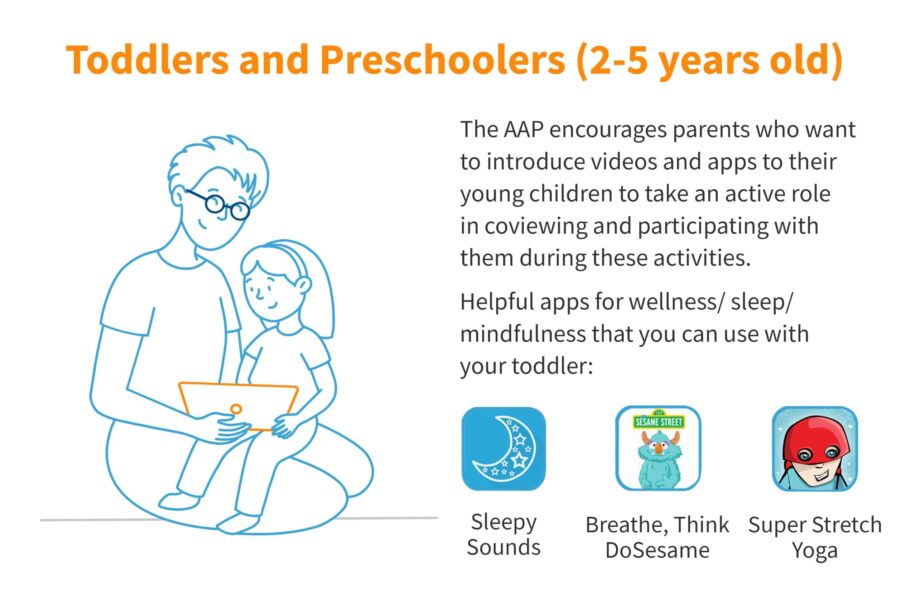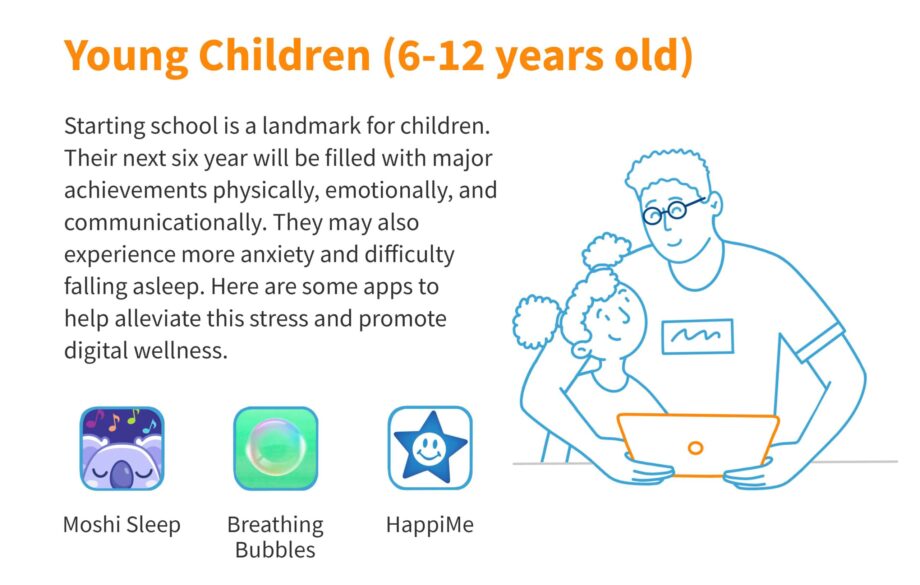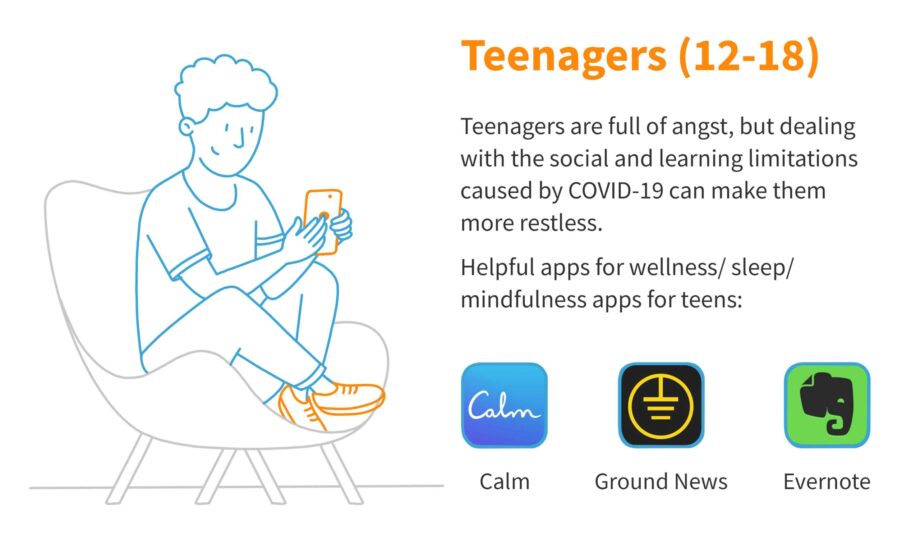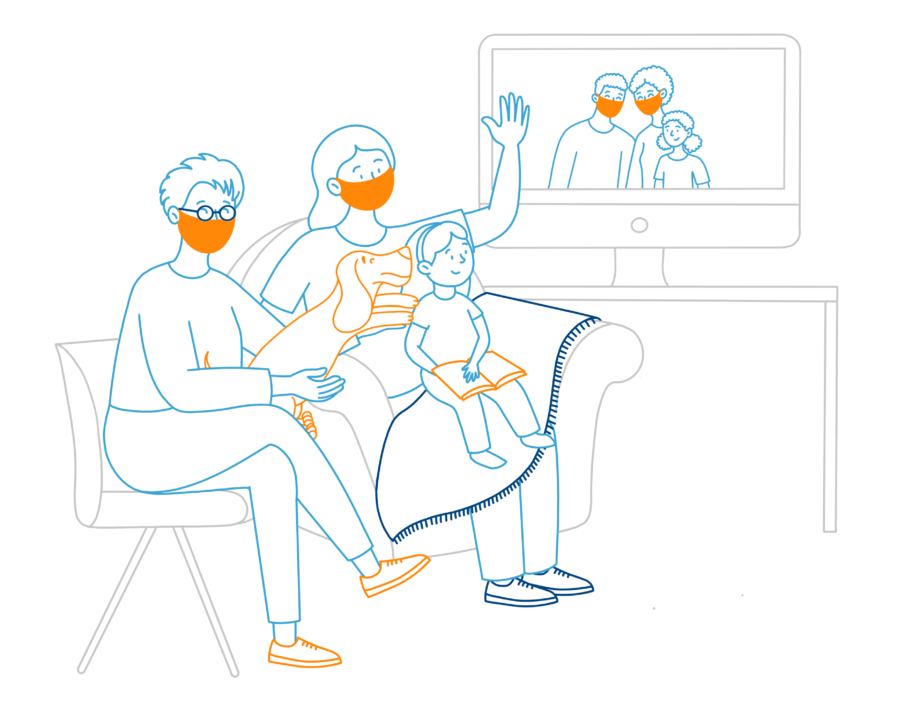Digital Wellness During COVID-19
Disclosure: By clicking on the product links in this article, Mattress Nerd may receive a commission fee at no cost to you, the reader. Read full disclosure statement.
The coronavirus pandemic has changed the familiar face of learning, planting kids in front of electronic devices, and forcing parents to become involved in their child’s education in ways they never imagined. As parents, we’ve been taught that too much screen time can be detrimental, but it may be time to consider challenging those assumptions.
Technology can give children and teens more than just access to school assignments, soothe anxious minds, broaden their learning opportunities, and boost their creativity. During a time when families are confined to their homes and more secluded than ever before, technology can help keep everyone stay socialized and prepared for the future when used correctly. Continue reading to learn more about leveraging your child’s’ digital wellness during COVID.

The Link Between Children and Teens’ Technology Use and Their Sleeping Habits
Countless studies through the years have pointed a critical finger at electronic devices, blaming the devices for hindering our children’s learning and negatively affecting sleep. We are here to set the record straight. Although technology does have its perks, which we will later cover, there are some things to be cautious about when it comes to your child’s digital wellness.
For example, computer screens, TV screens, tablets, and phone screens all emit blue light; this signals the body to stay alert by reducing the production of melatonin (the body’s natural sleep hormone).
Some researchers claim blue light can actually reprogram the brain to delay sleep with select studies suggesting that too much screen time in the evening can delay sleep onset, shorten sleep time, and cause daytime drowsiness in children.
Some studies even compared exposure to the blue light emitted from these devices to guzzling a cup of coffee or a sugary caffeinated soda before bed. But is screen time all that bad for children’s sleep? A study from researchers at the University of Oxford says no.
While between 50% to 90% of school-aged children might not be getting enough sleep, new research has shown that screen time has a very little practical effect on children’s sleep.
Managing Technology to Promote Sleep Hygiene
When it comes to sleep, technology can be a blessing or a curse. Some have suggested that too much screen time in the evening can delay sleep onset, shorten sleep time, and cause daytime drowsiness in children. For those reasons, it is important to take the necessary steps to manage screen time to promote sleep hygiene. There are several ways you can help your child get a good night’s sleep and leverage technology use in healthy ways.
#1 Use “night mode” on electronic devices
While it may help limit technology use completely before bed, many rely on different relaxation apps that require technology to help ease their mind and fall asleep. For this reason, it is important to check out your child’s device settings.
Many devices come with an option for “night mode.” This setting decreases the screen’s brightness and switches the background on the device from white and bright backgrounds to dark backgrounds with warm colors to minimize blue light exposure, making your child’s device brightness less likely to disrupt their sleep.
#2 Regularly monitor your child’s online activity
While your child’s or teen’s device may be a useful way to set up relaxation practices or bedtime stories, technology use should not go unmonitored. Technology is only helpful to your child’s wind-down routine when used correctly. Watching videos in bed or texting at night will not help your teen fall or stay asleep!
Consider turning your child’s device on “Do Not Disturb” to limit distractions, and placing their phone away from their bed at night. For stubborn teens, it is important to establish boundaries for technology-use and explain the importance of sleep hygiene.
Continue watching what your kids watch and talk to them about online bullying, sexting, and other issues that might cause them to worry, as this can interfere with their sleep and overall well being.
#3 Encourage relaxation before bedtime
Meditation, breathing exercises, and relaxation practices help reduce stress and prepare the mind and body for sleep. If your child is unable to do this on their own, check out apps that promote sleep and relaxation. These apps are designed to be listened to instead of watched, which prevents blue light exposure.
#4 Invest in a new mattress
Growing bodies need a bed with enough cushioning to relieve soreness and aches associated with growing pains and enough support to prevent back or neck strains.
Related: Best Mattresses for Kids
#5 Create a sleep environment, conducive to sleep
Your child’s bedroom should be a sleep sanctuary. Be sure blinds effectively block out unwanted light, use a noise machine if noises outside or in other parts of the house could interfere with your child’s sleep, and set the thermostat to a comfortable setting. Experts say between 60 to 68 degrees is best for a good night’s sleep.
Leveraging Technology to Promote Digital Wellness For Children
A national survey conducted by the Pew Research Center and Smithsonian magazine found that nearly 60% of Americans envision the future will be made better thanks to advancements in technology.
Setting one’s outlook to embrace technology and the benefit it can bring our children and future generations is a big step toward helping our children keep pace with advancements in the digital world. With the increase of tech in our daily lives, especially in light of the COVID-19 pandemic, we all have had to make adjustments.
Even the American Academy of Pediatrics has eased off its long-standing recommendations to avoid screen time for children under 2 years of age and limit tech exposure for older kids and teens to no more than two hours a day.
AAP now says it is fine for babies to Skype and FaceTime with family members they cannot socialize with in person. The AAP also says that it’s OK for older kids and teens to do some of their socializing, learning, and playing online.
However, the organization maintains that these activities should not overshadow the importance of and time required for sleep, exercise, food, conversation, and, if possible, face to face interaction with others.
Age-Appropriate Apps to Promote Digital Wellness
In order to help you leverage your child’s technology usage, we have broken down recommended limits and usage per age group and provided some age-appropriate apps to help children stay engaged and mindful during COVID-19.

- Sleepy Sounds: This bedtime app is like a singing night light. It plays lullabies, soothing nature sounds, or white noise on a loop while also displaying an animated mobile that lights up your child’s room.
- Breathe, Think, Do with Sesame: Is your child too worked up or anxious? Sesame Street characters come to the rescue in this app designed to teach your child learning strategies for calming down, like deep breathing.
- Super Stretch Yoga: Introduce your child to playful yoga poses and breathwork practices to burn off energy, stretch outgrowing muscles, and help them to relax.

- Moshi Sleep: Moshi’s award-winning app is filled with soothing nighttime music and sweet bedtime stories meant to help kids fall asleep faster and stay asleep longer.
- Breathing Bubbles: COVID-19 has made a lot of school-aged children more anxious. Breathing Bubbles is designed specifically for Samsung users. It is meant to help kids practice releasing worries and focus on good feelings.
- HappiMe: This app uses proven tools and techniques in a fun and engaging way to teach school-aged how to think positively and focus on helpful thoughts.

- Calm: As the name implies, this app is designed to help you “find your calm.” It features everything from meditations to soundscapes to sleep stories designed to help people of all ages sleep more and stress less.
- Ground News: It has become increasingly difficult to find unbiased news sources that do not trigger fear and anxiety in your children. Ground News lets your child compare coverage of current events and control for bias to get a more broad and informed perspective on the world around them.
- Evernote: Evernote is a productivity tool that works across multiple platforms to facilitate access to lists, notes, and even homework assignments, to help your teenager stay organized.
The Role Technology Has Played in the Pandemic
When government-mandated closures shut down in-person schools across the country to stop the spread of COVID-19, students, teachers, and families were forced to enter into virtual learning, and computers, tablets, and mobile screens lit up to answer the call.
As a result, these devices suddenly became less about entertainment and more about learning. This major shift around the world caused the number of time children spent staring at their electronic devices to shoot up.
A survey conducted by national parent-led organization ParentsTogether last spring indicated that nearly half of survey respondents reported that their kids were spending more than 6 hours online per day — a near-500% increase since before the pandemic hit.
While the idea of children having their eyes glued to a screen all day may be frightening to parents, this shift to children relying on technology for more than just entertainment does reap some benefits. Let’s take a closer look at some of the ways technology may benefit children as they take on more screen time during the pandemic.
Benefits of Children’s Technology Use During COVID-19

#1 Helps children/teens stay safe & connected
Social interaction is crucial for children of all ages. For young children, it helps to strengthen their sense of self and learn what others expect of them. By playing with others, children learn to share, set boundaries, and solve problems. It also sets them on a course for healthier relationships as they grow older.
But how can parents socialize their children during a pandemic? The quick answer: By thoughtful use of technology. By setting up times for your children to spend quality time with others through video chat or phone calls, you can allow them to maintain a sense of normalcy and socialize in a way that does not endanger the health of you and your family.
In fact, The Center for Disease Control and Prevention (CDC) encourages parents to find safe ways to keep their children socialized through phone or video chats, Zoom play dates, or by writing cards or drawing pictures to family members who they are unable to see.
#2 Prepares children/ teens for the future
Technology is vital to many adults’ jobs and lives in general, and more and more it’s becoming an important tool for children. Establishing a good understanding of technology at a young age can help prepare children for life in the ever-changing and rapidly developing digital work, especially during the pandemic when isolation and social distancing is highly encouraged.
According to a study by Johnson & Wales University, “To have a better understanding and to apply learned knowledge and skills in the real world, children must be perfect and have practical knowledge side by side. For that, from an early age, they should get the freedom to know, learn, and explore everything and this is only possible from technology integration.”
#3 Can foster creativity
In a survey conducted last year, professional services network Deloitte found that creative skills are one of the most important work skills that will shape workplaces in the future. And it’s no surprise.
Gen Zers were literally born into a world of digital devices. Their minds cannot even grasp the notion of a world that doesn’t readily wrap its arms around the latest and most innovative and creative technologies. Creativity is vital to a child’s cognitive development. It gives children joy, helps them understand, and motivates them to pursue goals. Unfortunately, studies show that students have fewer opportunities to express themselves creatively in school compared to outside of school.
Instead, the internet has given them plenty of platforms to explore and express themselves, whether they are blogging or vlogging or sharing photos or artwork online. Technology has no doubt provided a valuable resource to help children express themselves in resourceful and imaginative ways.
Concerns of Children’s Technology Use During COVID-19
The vast majority of parents who responded to the ParentsTogether survey expressed concerns about the risks increased screen time poses to children, such as bullying, sexual predation, and adverse impacts on learning and sleep.
However, a study conducted by the National Anti-Bullying Research and Resource Centre at Dublin City University in Ireland offers some reassurance. It finds that although children’s use of technology increased significantly during COVID-19, reports of cyberbullying did not significantly increase during that time.
Another national study conducted by Erikson Institute, a Chicago-based independent institute of higher education, found that technology use by children younger than age 6 (namely television, tablets, smartphones, and computers) was almost universal. And that number increased substantially as children aged.
Overall, the vast majority of parents surveyed by Erikson — a whopping 86% — said they were satisfied with how their young children used technology. They also related their children’s technology use to benefits their child’s development and literacy.
More than 50% of respondents reported that they believed technology helped their children prepare for school and be more successful after starting school.
From these results, you could argue that technology is not the problem, but rather the lack of limitations from parents that monitor their technology usage. So let’s discuss some ways parents can leverage technology use to promote digital wellness and a balanced lifestyle for their child.
The Takeaway
There is an abundance of resources you can turn to to help your children manage the added stress and anxiety they may feel due to COVID-19. Doing so can help them get a good night’s sleep so they are better prepared to tackle the day.
Many of these resources are available online or via mobile app. Don’t shy away from using technology to you and your child’s advantage. Doing so can benefit them not only during times of crisis but also in the years and decades to come.


